112 (emergency telephone number)

112 is the common emergency telephone number that can be dialed free of charge from most mobile telephones and, in some countries, fixed telephones in order to reach emergency services (ambulance, fire and rescue, police).
112 is a part of the GSM standard and all GSM-compatible telephone handsets are able to dial 112 even when locked or, in some countries, with no SIM card present. It is also the common emergency number in India and in nearly all member states of the European Union as well as several other countries of Europe and the world. 112 is often available alongside other numbers traditionally used in the given country to access emergency services. In some countries, calls to 112 are not connected directly but forwarded by the GSM network to local emergency numbers (e.g., 911 in North America or 000 in Australia).
112 is not always supported by VoIP operators or on non-GSM networks.
Origins
112 was first standardised by a Recommendation by the CEPT in 1972 and later by a decision of the EU Council in 1991[1] and subsequently reaffirmed in 2002 by article 26 of the Universal Service Directive[2] and its subsequent amendments.[3]
This choice of number has the following advantages:
- Different digits: with the numeric keypads used universally today, using at least two different digits instead of the same digit repeatedly significantly reduces the risk of accidental calls. Young children, vibrations, defective keys and collisions with other objects are much more likely to press the same key repeatedly than a particular sequence of different keys, particularly with a button-operated keypad. Accidental calls to emergency centres from mobile phones, which can dial emergency numbers even with locked keypad, are a particular problem with same-digit numbers, such as the UK's 999.[4]
- Low digits: in the days of rotary dial telephones, using only those digits that require the least dial rotation (1 and 2) permitted a dial lock[5] in hole 3 to effectively disable unauthorised access to the telephone network without preventing access to the emergency number 112. The same choice also maximised dialling speed. Additionally, telephone systems used pulse dialling instead of later DTMF tones; briefly activating the hook once has the same effect as dialling "1", so repeatedly pushing the hook might result in calling 1-1-1. For this reason, Germany's police emergency number was changed from 111 to 110. With numeric keypads, pressing only the first and second button on the keypad is marginally easier in a difficult situation than other keys.
Implementation

The countries which use the 112 number for emergencies include:
-
 Albania (alongside 129 for Police, 127 for Ambulance and 128 for Fire)
Albania (alongside 129 for Police, 127 for Ambulance and 128 for Fire) -
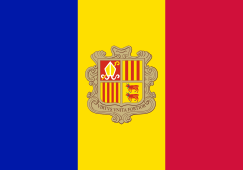 Andorra (Ambulance and Fire, alongside 118 for same services and 110 for Police)
Andorra (Ambulance and Fire, alongside 118 for same services and 110 for Police) -
 Australia (redirects to 000 from mobile phones)
Australia (redirects to 000 from mobile phones) -
 Austria (Police only; alongside 122 for Fire, 133 for Police, and 144 for Ambulance; 059 133 is the non-emergency number for any local police department)
Austria (Police only; alongside 122 for Fire, 133 for Police, and 144 for Ambulance; 059 133 is the non-emergency number for any local police department) -
 Azerbaijan (alongside 102 for Police, 101 for Fire and 103 for Ambulance)
Azerbaijan (alongside 102 for Police, 101 for Fire and 103 for Ambulance) -
 Belarus (Fire only; alongside 101 for Fire, 102 for Police, and 103 for Ambulance)
Belarus (Fire only; alongside 101 for Fire, 102 for Police, and 103 for Ambulance) -
.svg.png) Belgium (Ambulance and Fire; alongside 100 for same services and 101 for Police)
Belgium (Ambulance and Fire; alongside 100 for same services and 101 for Police) -
 Bosnia and Herzegovina (alongside 122 for Police, 123 for Fire and 124 for Ambulance)
Bosnia and Herzegovina (alongside 122 for Police, 123 for Fire and 124 for Ambulance) -
 Brazil (redirects to 190 - Militar Police - alongside 193 for Fire, 190 for Militar Police, and 192 for Ambulance)
Brazil (redirects to 190 - Militar Police - alongside 193 for Fire, 190 for Militar Police, and 192 for Ambulance) -
 Bulgaria (alongside 150 for Ambulance, 160 for Fire and 166 for Police automatically redirected to 112)
Bulgaria (alongside 150 for Ambulance, 160 for Fire and 166 for Police automatically redirected to 112) -
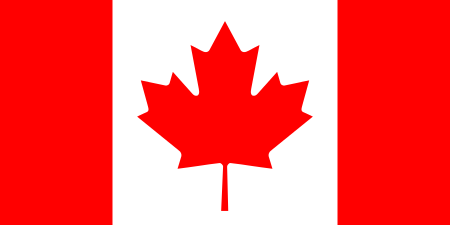 Canada (redirects to 911 on mobile phones)
Canada (redirects to 911 on mobile phones) -
 China (provides information in English about emergency numbers)
China (provides information in English about emergency numbers) -
 Colombia (Police only; alongside 123 for all emergencies, 125 for Ambulance and 119 for Fire)
Colombia (Police only; alongside 123 for all emergencies, 125 for Ambulance and 119 for Fire) -
 Costa Rica (alongside 911)
Costa Rica (alongside 911) -
 Croatia (alongside 192 for Police, 193 for Fire, 194 for Ambulance and 195 for Maritime search and rescue)
Croatia (alongside 192 for Police, 193 for Fire, 194 for Ambulance and 195 for Maritime search and rescue) -
 Cyprus (alongside 199)
Cyprus (alongside 199) -
 Czech Republic (alongside 155 for Ambulance, 158 for Police and 150 for Fire)
Czech Republic (alongside 155 for Ambulance, 158 for Police and 150 for Fire) -
 Denmark (including
Denmark (including 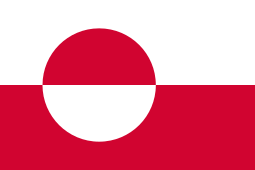 Greenland,
Greenland, 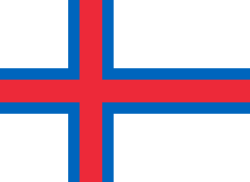 Faroe Islands). (114 for nearest police station)
Faroe Islands). (114 for nearest police station) -
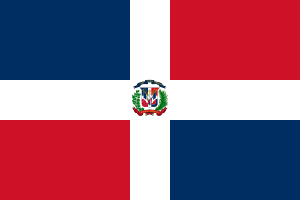 Dominican Republic (alongside 911)
Dominican Republic (alongside 911) -
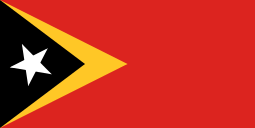 East Timor
East Timor -
 Egypt (alongside 122 for Police, 123 for Ambulance and 180 for Fire)
Egypt (alongside 122 for Police, 123 for Ambulance and 180 for Fire) -
 Estonia
Estonia -
 Finland (including
Finland (including 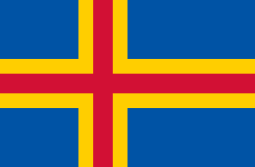 Åland)
Åland) -
 France (alongside 15 for Ambulance, 17 for Police and 18 for Fire)
France (alongside 15 for Ambulance, 17 for Police and 18 for Fire) -
 Germany (alongside 110 for Police)
Germany (alongside 110 for Police) -
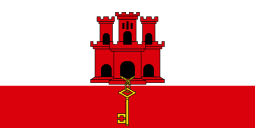 Gibraltar (alongside 190 for Fire and Ambulance and 199 for Police)
Gibraltar (alongside 190 for Fire and Ambulance and 199 for Police) -
 Georgia Single emergency number in Georgia 112
Georgia Single emergency number in Georgia 112 -
 Greece (alongside 100 for the police, 108 for port police, 166 for Ambulance and 199 for the fire service)
Greece (alongside 100 for the police, 108 for port police, 166 for Ambulance and 199 for the fire service) -
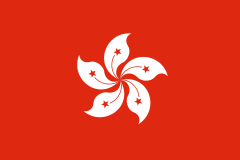 Hong Kong (Redirects to 999 on mobile phones)
Hong Kong (Redirects to 999 on mobile phones) -
 Hungary (alongside 104 for Ambulance, 105 for Fire and 107 for Police; 911 is redirected to 112 on mobile phones)
Hungary (alongside 104 for Ambulance, 105 for Fire and 107 for Police; 911 is redirected to 112 on mobile phones) -
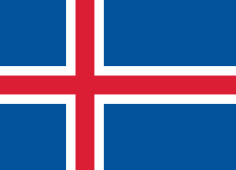 Iceland
Iceland -
 India (alongside police (100), fire brigade (101), ambulance (102) and Emergency Disaster Management (108))
India (alongside police (100), fire brigade (101), ambulance (102) and Emergency Disaster Management (108)) -
 Indonesia (Mobile phones - Police only; alongside 110 for Police, 118 for Ambulance and 113 for Fire)
Indonesia (Mobile phones - Police only; alongside 110 for Police, 118 for Ambulance and 113 for Fire) -
 Iran (alongside 110 for Police, 115 for Ambulance, 112 for Hilal Ahmar Ambulance and 125 for Fire; 911 is redirected to 112 on mobile phones)
Iran (alongside 110 for Police, 115 for Ambulance, 112 for Hilal Ahmar Ambulance and 125 for Fire; 911 is redirected to 112 on mobile phones) -
 Ireland (alongside 999)
Ireland (alongside 999) -
 Israel (Redirects to 100 - Police - and will serve the planned unified center. alongside 100 for Police, 101 for Ambulance and 102 for Fire).
Israel (Redirects to 100 - Police - and will serve the planned unified center. alongside 100 for Police, 101 for Ambulance and 102 for Fire). -
 Italy (alongside where NUE112 still not implemented: 113 for National Police, 115 for Fire and 118 for Ambulance)
Italy (alongside where NUE112 still not implemented: 113 for National Police, 115 for Fire and 118 for Ambulance) -
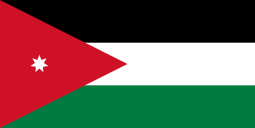 Jordan (alongside 911)
Jordan (alongside 911) -
 Kazakhstan (alongside 101 for Fire, 102 for Police and 103 for Ambulance)
Kazakhstan (alongside 101 for Fire, 102 for Police and 103 for Ambulance) -
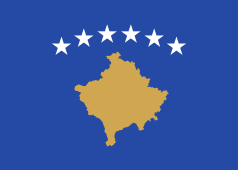 Kosovo (alongside 192 for Police, 193 for Fire and 194 for Ambulance)
Kosovo (alongside 192 for Police, 193 for Fire and 194 for Ambulance) -
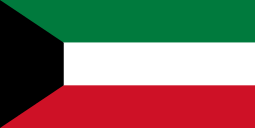 Kuwait
Kuwait -
 Latvia (alongside 110 or 02 for Police, 113 or 03 for Ambulance and 114 or 04 for Emergency gas service, 01 for fire brigade)
Latvia (alongside 110 or 02 for Police, 113 or 03 for Ambulance and 114 or 04 for Emergency gas service, 01 for fire brigade) -
 Lebanon (Police only; alongside 160 for Police, 140 for Ambulance and 175 for Fire)
Lebanon (Police only; alongside 160 for Police, 140 for Ambulance and 175 for Fire) -
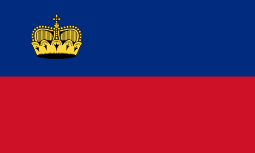 Liechtenstein (Police only; alongside 117 for Police, 144 for Ambulance and 118 for Fire)
Liechtenstein (Police only; alongside 117 for Police, 144 for Ambulance and 118 for Fire) -
 Lithuania (alongside 011 for Fire, 022 for Police and 033 for Ambulance)
Lithuania (alongside 011 for Fire, 022 for Police and 033 for Ambulance) -
 Luxembourg (alongside 113 for Police)
Luxembourg (alongside 113 for Police) -
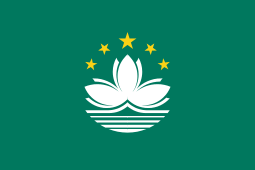 Macau (alongside 999)
Macau (alongside 999) -
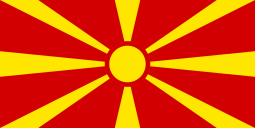 Macedonia (alongside 192 for Police, 193 for Fire, 194 for Ambulance)
Macedonia (alongside 192 for Police, 193 for Fire, 194 for Ambulance) -
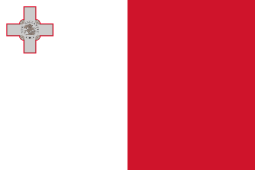 Malta
Malta -
 Malaysia (Redirects to 999 on mobile phones)
Malaysia (Redirects to 999 on mobile phones) -
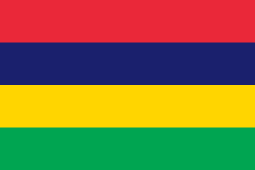 Mauritius (Police only; alongside 114 for Ambulance and 115 for Fire)
Mauritius (Police only; alongside 114 for Ambulance and 115 for Fire) -
 Moldova (Redirects to 902 on mobile phones; alongside 901 for Fire, 902 for Police and 903 for Ambulance)
Moldova (Redirects to 902 on mobile phones; alongside 901 for Fire, 902 for Police and 903 for Ambulance) -
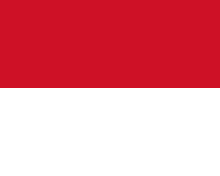 Monaco (alongside 15 for Ambulance, 17 for Police and 18 for Fire)
Monaco (alongside 15 for Ambulance, 17 for Police and 18 for Fire) -
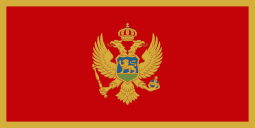 Montenegro (alongside 122 for Police, 123 for Fire and 124 for Ambulance)
Montenegro (alongside 122 for Police, 123 for Fire and 124 for Ambulance) -
 Nepal (Police only; alongside 100 for Police, 101 for Fire and 102 for Ambulance)
Nepal (Police only; alongside 100 for Police, 101 for Fire and 102 for Ambulance) -
 Netherlands (0900-8844 is the non-emergency number for any local police department)(In the Caribbean Netherlands, 112 redirects to 911 whereas in the European Netherlands, 911 redirects to 112)
Netherlands (0900-8844 is the non-emergency number for any local police department)(In the Caribbean Netherlands, 112 redirects to 911 whereas in the European Netherlands, 911 redirects to 112) -
 New Zealand (redirects to 111)
New Zealand (redirects to 111) -
 Nigeria
Nigeria -
 Norway (Police only, 110 for Fire and 113 for Ambulance. 02800 is the non-emergency number for any local police department)
Norway (Police only, 110 for Fire and 113 for Ambulance. 02800 is the non-emergency number for any local police department) -
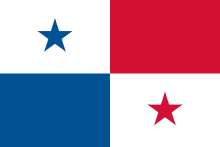 Panama (alongside 911; 104 for Police and 103 for Fire)
Panama (alongside 911; 104 for Police and 103 for Fire) -
 Poland (alongside 999 for Ambulance, 998 for Fire, and 997 for Police)
Poland (alongside 999 for Ambulance, 998 for Fire, and 997 for Police) -
 Portugal (117 for reporting forest fires)
Portugal (117 for reporting forest fires) -
 Romania
Romania -
 Russia (alongside 101 for Fire, 102 for Police, 103 for Ambulance and 104 for Emergency gas service)
Russia (alongside 101 for Fire, 102 for Police, 103 for Ambulance and 104 for Emergency gas service) -
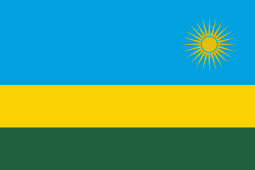 Rwanda (Police and fire brigade; 912 for Ambulance)
Rwanda (Police and fire brigade; 912 for Ambulance) -
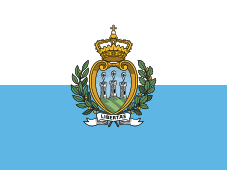 San Marino
San Marino -
 Saudi Arabia (alongside 911)
Saudi Arabia (alongside 911) -
 Serbia (alongside 192 for Police, 193 for Fire, and 194 for Ambulance)
Serbia (alongside 192 for Police, 193 for Fire, and 194 for Ambulance) -
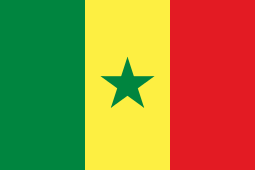 Senegal (alongside 17 for Police, 18 for Fire, and 15 for Ambulance)
Senegal (alongside 17 for Police, 18 for Fire, and 15 for Ambulance) -
 Slovakia (alongside 155 for Ambulance, 158 for Police, 150 for Fire and 18300 for Mountain Rescue Service)
Slovakia (alongside 155 for Ambulance, 158 for Police, 150 for Fire and 18300 for Mountain Rescue Service) -
 Slovenia (alongside 113 for Police)
Slovenia (alongside 113 for Police) -
 South Korea (Police only; alongside 119 for Ambulance and Fire)
South Korea (Police only; alongside 119 for Ambulance and Fire) -
 Spain (alongside 091 for Police, 061 for Ambulance and 080 for Fire)
Spain (alongside 091 for Police, 061 for Ambulance and 080 for Fire) -
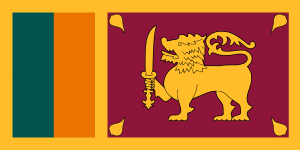 Sri Lanka (Police only; alongside 119 for Police and 110 for Ambulance and Fire)
Sri Lanka (Police only; alongside 119 for Police and 110 for Ambulance and Fire) -
 Sweden
Sweden -
 Switzerland (alongside 117 for Police, 144 for Ambulance and 118 for Fire)
Switzerland (alongside 117 for Police, 144 for Ambulance and 118 for Fire) -
 Syria (Police only; alongside 110 for Ambulance and 113 for Fire)
Syria (Police only; alongside 110 for Ambulance and 113 for Fire) -
 Taiwan (Republic of China) (alongside 110 for Police, 119 for Ambulance and Fire brigade)
Taiwan (Republic of China) (alongside 110 for Police, 119 for Ambulance and Fire brigade) -
 Turkey (Applied in 2 provinces, in the remaining 79 provinces 112 used for ambulance only; a pilot project is under way for all emergency calls.;[6] alongside 110 for Fire and 155 for Police)
Turkey (Applied in 2 provinces, in the remaining 79 provinces 112 used for ambulance only; a pilot project is under way for all emergency calls.;[6] alongside 110 for Fire and 155 for Police) -
 Ukraine (alongside 101 for Fire, 102 for Police, 103 for Ambulance and 104 for Emergency gas service)
Ukraine (alongside 101 for Fire, 102 for Police, 103 for Ambulance and 104 for Emergency gas service) -
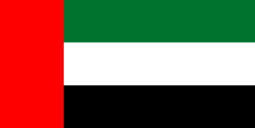 United Arab Emirates (alongside 999 for Police, 998 for Ambulance and 997 for Fire)
United Arab Emirates (alongside 999 for Police, 998 for Ambulance and 997 for Fire) -
 United Kingdom (alongside 999)
United Kingdom (alongside 999) -
 United States (alongside 911, 112 forwards on GSM carriers to 911 only, including AT&T and T-Mobile.)
United States (alongside 911, 112 forwards on GSM carriers to 911 only, including AT&T and T-Mobile.) -
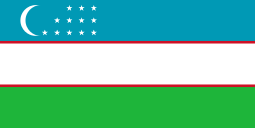 Uzbekistan
Uzbekistan -
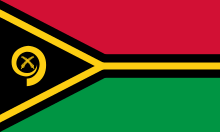 Vanuatu
Vanuatu -
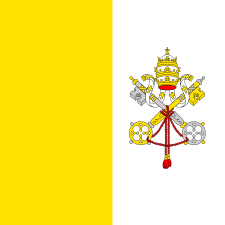 Vatican City (alongside 113 for National Police, 115 for Fire and 118 for Ambulance)
Vatican City (alongside 113 for National Police, 115 for Fire and 118 for Ambulance)
In many countries, emergency numbers previously used also continue to be available; e.g. 061 and 112 in Spain, 999 and 112 both function in Ireland and the UK. In the United States, only some carriers, including AT&T will map the number 112 to its emergency number 9-1-1.
Adoption
112 is managed and financed in the European Union by each member state (country) which also decide on the organization of the emergency call centres. The number is also adopted in the candidates for EU accession and members of the EEA agreement.
The International Telecommunications Union recommends that member states that are selecting a primary or secondary emergency number choose either 911, 112 or both.[7] 112 is one of two numbers (the other being the region's own emergency number) that can be dialed on most GSM phones even if the phone is locked.[8]
E112
E112 is a location-enhanced version of 112. The telecom operator transmits the location information to the emergency centre. The EU Directive E112 (2003) requires mobile phone networks to provide emergency services with whatever information they have about the location a mobile call was made. This directive is based on the FCC's Enhanced 911 ruling in 2001.
The new eCall project for automated emergency calls from cars is based on E1000.
European 112 Day
Since 2009 and a tripartite convention signed by the European Commission, the European Parliament and the Council of the EU, 11 February (11/2) is the European 112 Day. At this occasion, events take place to promote the existence and the appropriate use of the EU emergency number.
The European Emergency Number Association has published some of the actions that were taken in European countries on their website.
Expert Group on Emergency Access (EGEA)
Getting 112 to work across the EU is a complex task. It requires in particular coordination between civil protection administrations (the emergency authorities who handle the call) and electronic communications administrations (who have to make sure that a 112 call reaches the emergency operator). That is why the Commission decided to act at European level and set up the Expert Group on Emergency Access (EGEA) at the end of 2005.
The objective of the group is to deal with practical issues Member States are facing to provide an efficient and effective 112 service to citizens. This group seeks practical solutions to problems experienced by the emergency services at local, regional or national levels and deals with issues related to the application of new technologies for communication with emergency services.
The European Commission decided that EGEA would not be renewed for the year 2014. The European Commission noted that in case the work by the working group would appear necessary during the course of this period, this work would be fully covered and dealt with during regular Communication Committee (COCOM) meetings, or if needed, the composition of any of these groups could be called for a dedicated meeting back to back with a regular COCOM meeting.
See also
- 112 Georgia
- Emergency phone number
- eCall
- Emergency telephone
- In case of emergency (ICE) entry in the mobile phone book
- International Mobile Satellite Organization
- Single Non-Emergency Number
References
- ↑ "91/396/EEC: Council Decision of 29 July 1991 on the introduction of a single European emergency call number". eur-lex.europa.edu. 29 July 1991. Retrieved 6 May 2012.
- ↑ "Directive 2002/22/EC of the European Parliament and of the Council of 7 March 2002 on universal service and users' rights relating to electronic communications networks and services (Universal Service Directive)". eur-lex.europa.edu. Retrieved 6 May 2012.
- ↑ "Directive 2009/136/EC of the European Parliament and of the Council of 25 November 2009". eur-lex.europa.edu. 25 November 2009. Retrieved 6 May 2012.
- ↑ Mobiles blamed for emergency calls, BBC News, 2000-03-21.
- ↑ Such locks were commonly used, e.g. "ABUS Telefonschloß T70 für Wählscheiben" in Germany.
- ↑ 112 in Turkey
- ↑ "Guidelines to select Emergency Number for public telecommunications networks" (PDF). International Telecommunications Union. 15 May 2008. p. 4. Retrieved 6 May 2012.
- ↑ 3rd Generation Partnership Project (June 2002), 3rd Generation Partnership Project; Technical Specification Group Services and System Aspects; Man-Machine Interface (MMI) of the Mobile Station (MS);Service description, Stage 1 (Release 1998) (PDF), 3GPP TS 02.30 V7.1.1
External links
| Wikimedia Commons has media related to 112 (emergency telephone number). |